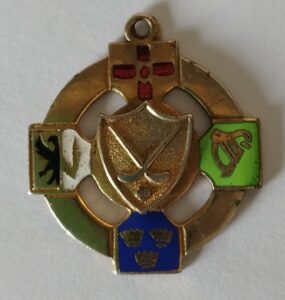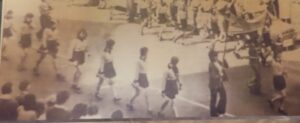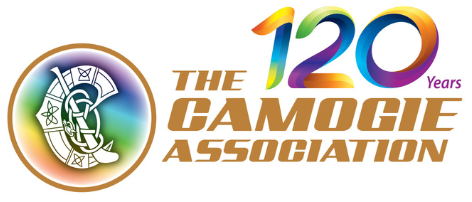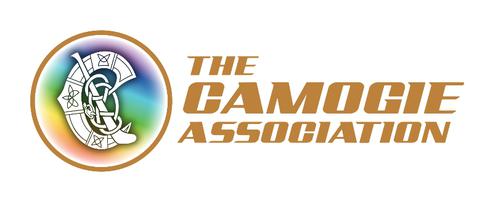
For generations, Féile Peil na nÓg and Féile na nGael events stood out for their unique nature, unparallelled in the world of sport. Like the Paris-Dakar Rally or the Iditarod Sled Dog Race, they are cultural phenomena that have evolved out of a special local culture unlike any other.
In so many ways, it defies explanation and understanding. Hordes of teenagers descend on one area of the country, being welcomed into the homes of their hosts, before going into sporting battle against them and then forming bonds that in many cases, would last a lifetime.
In recent years, the introduction of teams from outside of Ireland have only added to the colour and quirkiness of the whole thing. Tiny Irish villages find themselves taking on New York in a fixture that would cause any outsider to double take, but yet it fits perfectly into the ethos of the occasion.
Then just like every other game, the players empty their hearts and souls on the field, chasing with fervour a result that immediately becomes irrelevant as soon as the final whistle sounds.
Moreover, while the overnight experience is no longer part of John West Féile, the organisation has evolved to suit the modern times. The host club/county hospitality, camaraderie and friendships are as much a part of it as ever, but the one-day experience, with many more regional events which bring even more young athletes into the Féile extravaganza, has retained the festival-like atmosphere that makes it so special for players and families alike.
Unique though they may be however, Féile history and Féile events have over time become meshed and tangled with the wider history and culture of GAA, Ladies Football and Camogie, and the perfect example of this is in Rathnure, Co. Wexford.
50 years ago, Rathnure Camogie Club was in its infancy. They had their pioneers – Wexford’s All-Ireland winning captain from 1968, Mary Cahill Walsh, was perhaps the brightest star on the local scene, even if it was still a few years before she was to marry into the parish – but it was only in that year of success for her and for the Model county, that Rathnure Camogie Club was born into existence.
Whether fledgling clubs succeed in getting off the ground or not usually hangs on a handful of stalwarts, and whether they can carry things long enough for the early pollen to germinate and turn into real grassroots.

In Rathnure, two of those stalwarts were Jim and Margaret Shiels, and they were about to carve out a special place in history for Rathnure Camogie Club, an accolade that would be theirs and theirs alone forever. They were to drive a group of talented and enthusiastic young players to win the first ever Féile na nGael Camogie title – both figuratively, and literally!
“It’s amazing what you do and don’t remember” says Mary Barron with a smile, as she thinks back on the experience of playing in that first ever Camogie Féile championship.
“Jim was a Meath native, so I think because of that, he got us into the Community Games finals in 1973 in Mosney. We won that, and I think that’s why we were chosen to represent Wexford at the Féile the next year”.
“Heading off to Limerick, there were probably around 15 of us players, and then there was Jim and Margaret, the only two adults who travelled with us” she recalls.
“They brought us down in a minibus, the Lawlor family were very good to the camogie, they used to provide their bus for us. We left on lunchtime on Friday, squashed into a red minibus with Jim driving and Margaret in the front seat beside him. It was fantastic, we played our first game on Friday evening, then were met by our host family”.

Ballyagran Camogie club hosted them, while another Limerick club – Ahane – were to be Rathnure’s opponents in Saturday evening’s final.
“We played two more games on the Saturday morning, then Ahane in the final. I don’t remember much about the game, but what stuck with me was the welcome we received, the hospitality from the families that took us in, and more than anything, the sense of pride, of belonging to something bigger. It was like nothing else we’d ever experienced, and it was truly special”.
Mary undersells the sporting story, which is that Rathnure were comfortable winners by 5-0 to 0-1, and they were following in some big footsteps in their parish history.
Rathnure was already one of the most storied GAA clubs in the country, home of the Rackard brothers and finalists in each of the four Leinster club SHC championships that had been held up to that point, winning titles in 1971 and 1973.
But the camogie club was quickly blazing a trail too. They won six juvenile titles in a row between 1971 and 1976, their Wexford Intermediate title of 1973 saw them promoted to senior (where they have remained ever since) and some two decades later, in 1995, they reached the pinnacle of the club game when they beat Toomevara to win the All-Ireland Club Championship.
“We came from a very small parish with a population of less than 1,000, but hurling and camogie was what really bonded us as a community” Mary says.
“I was away in boarding school and lots of girls had gone their own ways, but when we were at home it was just like being in primary school, we were up in the hurling field hitting the ball around together, because that was the tradition in the parish and the village.
Putting a structure together and this raw energy was where the heroes came into the picture.
“I can’t emphasise enough how important Jim and Margaret Sheils were to us. If you think now about what we did, going over to the other side of the country, but we always felt very safe and that came from how Jim and Margaret treated us, they looked after us as if we were their own.
“Then because we felt very safe in Rathnure, and because we were doing very well, you felt that the community was with you and you expected the same wherever you went. To be honest I don’t think there was any talk of fundraising among the players to cover the cost of travelling, that was looked after as well.
“A lot of those players are still my friends to this day, but to all of us, it’s not about a sporting achievement or the fact that we won.
“It’s the feeling of community, the pride and happiness of it, the feeling of belonging to something special. That stays with you”.

In 1974, two adults and a pioneering group of teenage camógs achieved something special for Rathnure club. 50 years later, Rathnure Camogie Club is one of the host clubs to John West Féile na nGael 2024, and this Saturday the club will play host to the 50th Commemorative Division, in recognition of that remarkable achievement.
On the club’s Facebook page, a call was put out last month for volunteers to help with the effort in hosting this special occasion. Swathes of people put their hand up, and since then, meetings have been held in the Syl Barron room of the club, to co-ordinate the effort.
Syl Barron was Mary’s father, one of the founders of Rathnure Camogie Club, and a man whose name will always be associated with his immense commitment to gaelic games in Rathnure and Wexford. Yet again, when we follow the threads of our story, they all weave in together.
It’s a tale of stalwarts from a time gone by, breaking ground, and laying the foundations for a cultural phenomenon that half a century later, has grown into one of the revered traditions of the Irish summer, and something that enhances the lives of thousands of Irish teenagers every year.
The journey of Féile, and the journey of Rathnure Camogie Club, intertwined and shared forever, is a unique story, and yet it’s one that resonates across countless parishes and communities across Ireland.
This weekend, expect yet more history to be written, and so many more special memories to be forged for generations to come.


















